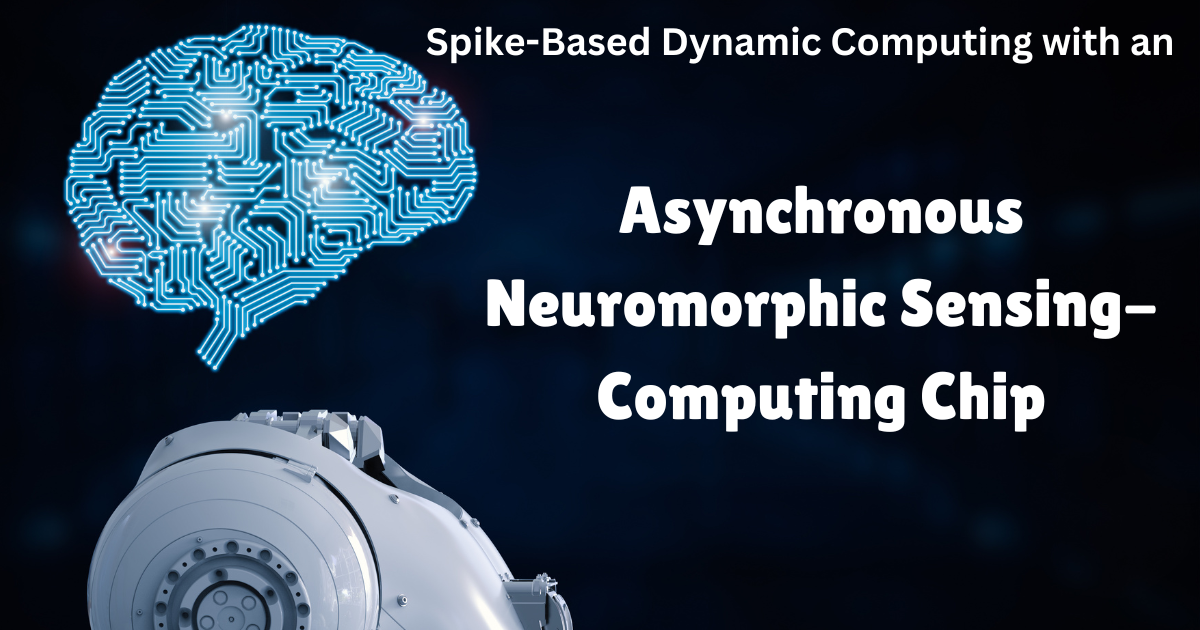Spike-Based Dynamic Computing with an Asynchronous Neuromorphic Sensing-Computing Chip: A spike is a type of work done by a team to gather information and determine what is required to reduce the risks and resolve particular software issues. The team “Spike” relates to extreme programming and means a task to research a question and resolve problems.
Spike-Based Dynamic Computing with an Asynchronous Neuromorphic Sensing-Computing Chip
Speck is a neuromorphic chip with sensing computing integrated functionality, which consumes quite low consumption via asynchronous digital design. Such as high energy efficiency and low production cost is difficult to promise modelling flexibility and computing precision. It is acceptable in our target scenarios where energy efficiency matters more than task difficulty and behaviour accuracy.

By mimicking the neurons and synapses of the human brain and employing spiking neural networks on neuromorphic chips, neuromorphic computing offers a promising energy-efficient machine intelligence. How to borrow high-level brain dynamic mechanisms to help neuromorphic computing achieve energy advantages is a fundamental issue.
The dynamic imbalance in spiking neural networks is uncovered and the dynamic imbalance in spiking neural networks is uncovered and an attention-based framework for achieving the algorithmic requirements of dynamic computing is developed.
First, we design and fabricate an asynchronous chip, with a low processor resting power of 4.2mW, speck can satisfy the hardware requirements of dynamic computing no input consumes no energy.
Second, we uncover the dynamic imbalance in spiking neural networks and develop an attention-based framework for achieving the algorithmic requirements of dynamic computing there are varied inputs that consume energy with large variances.
Introduction
Resource and energy constraints are the major restrictions to deploying traditional AI methods, especially in real-world edge platforms. A solution with a low-power future is neuromorphic computing, which is partially inspired by the human brain that runs even more complex and larger neural networks with a total energy need of just 20 W . By abstracting the computations in the human brain at the neuron and synapse level, existing neuromorphic platforms, such as the classic Brain Scales SpinNNaker and more have demonstrated impressive energy efficiency via spike-based communication and computing.
The human`s important function is the ability to dynamically allocate resources according to the required demand, which is what we call ” Dynamic computing” due to the attention mechanism. Dynamic computing encompasses two connotations: Energy consumption is minimal when there is no input, while it significantly varies with input changes. With these things understood as the anchor, we present an application-oriented algorithm software-hardware co-designed neuromorphic system to investigate the dynamic and computing of spike-based machine intelligence in our newly designed neuromorphic chip.
Spike-Based Dynamic Computing
In the context of spike-based computing, it is commonly believed that computation is triggered exclusively by input spikes. With each input, only a subset of the network becomes activated, resulting in the activation of multiple sets of spikingneurons. So it is natural to believe that varied inputs consume different energy in SNNs. We open a phenomenon called dynamic imbalance” that commonly exists but has been ignored for a long time in SNNs.
To efficiently deploy algorithms/ models for various dynamic vision applications, speck provides a complete software toolchain, including data management, model simulation, host management etc.
Results
Dynamic computing is a merging topic in deep learning Dynamic neural networks can adapt their computational graphs to the input at the inference stage, thus holding more attractive properties than static ones, such as performance, computational efficiency, etc. Spike-based neuromorphic computing naturally has a dynamic computational graph, with often only a small percentage of the overall spiking neurons being active at any moment and the rest being idle.
Methods
Whether leveraged as a small stand-alone application or employed as edge nodes to build a larger system. edge devices call for edge hardware with unprecedented low latency and low power.
First, the human brain integrates visual information from the eyes, which perceive scenes sparsely. Secondly, even if the eye perceives lots of information, some globally advanced information processing mechanisms in the human brain, such as attention.
Conclusion
In this article, we discussed Spike-Based Dynamic Computing with an Asynchronous Neuromorphic Sensing-Computing Chip of spike-based computing it is commonly believed that computation is triggered by input spikes. With each input, only a subset of the network becomes activated, resulting in the activation of multiple sets of spikingneurons.
